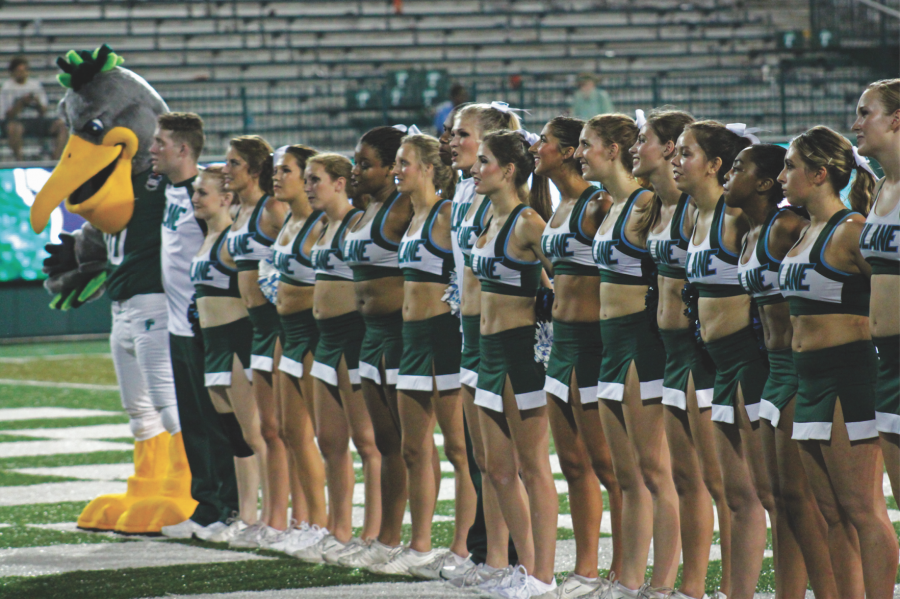Cheerleading: the outlier of athletics
The cheerleading team stands in the end zone facing the student section after a Tulane home football game. The cheerleaders cheer at every football game, home and away, and stay from before the game starts until the end.
November 4, 2015
Spending at least six hours a week practicing, attending every game and Tulane event through each season, the cheerleading squad is an ever-present part of the Tulane Athletics experience. While the squad is encompassed by the athletics department now, it remains separated in that it is not considered by the NCAA, the governing body of collegiate athletics, to be a sport. The topic of whether or not cheerleading constitutes a Division I sport continues to be debated across the board.
Without bearing the status of an NCAA athlete, the Tulane cheerleaders have limited access to the Wilson Center. While they can visit the trainers in the facility, they are not allowed access to the nutrition center that provides athletes with free food to keep them eating right.
“I think [Athletics] need[s] to realize that the cheerleaders work so hard for everything,” former cheerleader Katie Frank said. “It’s not an easy thing to do.”
Beyond the nutrition center is a common area with study space exclusive to the student-athletes. There, they can receive exclusive and free one-on-one tutoring to help keep them on track with their studies, even as they travel and miss class time. Additionally, the NCAA players have the ability to register for classes early because of their schedules. The cheerleaders remain excluded from these benefits as well.
“I think cheerleading should have all of the perks like everyone else,” former cheerleader Cillie Harrison said. “More people would want to do it, and it would be more attractive to possible cheerleaders, which would make the team better.”
A vast majority of Division I sports teams offer athletic scholarships ― but cheerleaders do not receive these. Furthermore, the cheerleading team has the longest season out of all of the teams. They cheer for football, volleyball, men’s basketball, women’s basketball and baseball seasons. On any given week, the cheerleaders will practice for three hours on two days, practice before a game, cheer at the pregame parade and at one or two games.
Though the cheerleaders are not deemed a part of the football program, the squad is expected to send six players to every away game. The cheerleaders do not get automatically excused absences if they travel to these away games, but the NCAA athletes do get their absences excused by the school.
“If you want to cheer here, you want to cheer here,” coach Lee Anne Bugg said. “The girls we have on the team are committed to doing that. You have to want it from within. We’ve had this slow, steady growth since I’ve been involved. Hopefully, that just continues. I don’t expect anything overnight, just those kind of little steps.”
This is not just an issue at Tulane but an area of national contention, and this topic is far from fizzling out of the national spotlight. If cheerleading teams continue to be excluded by the NCAA and Tulane, schools may see the replacement of collegiate cheerleading with other forms of entertainment. In the future, there remains a possibility that Tulane may not be able to field a cheerleading team for any of its sports.























Leave a Comment